
Northern Liberties is a neighborhood in Philadelphia, Pennsylvania, United States. Prior to its incorporation into Philadelphia in 1854, it was among the top 10 largest cities in the U.S. in every census from 1790 to 1850.
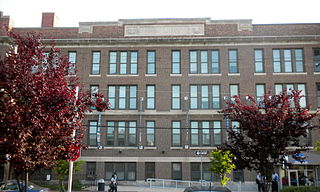
Mastery Charter School Thomas Campus, formerly the George C. Thomas Junior High School, is a secondary charter school located in the south section of Philadelphia, Pennsylvania. It is run by Mastery Charter Schools. It is located at the intersection of 9th and Johnston Streets just north of the South Philadelphia Sports Complex. Nearby are the residential neighborhoods of Marconi Plaza, Lower Moyamensing, and Packer Park; the recreational parkland of FDR Park; and the historical and new business-development center of the Philadelphia Naval Shipyard. The school is located within the boundaries of the Sports Complex Special Services District, directly on the Oregon Avenue urban corridor of small shops and restaurants anchored by larger shopping plazas on the east and west end of Oregon Avenue, and near the revitalized commercial area of Passyunk Avenue. It shares a site with the D. Newlin Fell School.

The Tyrone Borough Historic District is a national historic district that is located in Tyrone, Blair County, Pennsylvania.

The North Wayne Historic District is a national historic district that is located in Wayne, Delaware County, Pennsylvania.

The South Wayne Historic District is a national historic district that is located in Wayne, Delaware County, Pennsylvania.
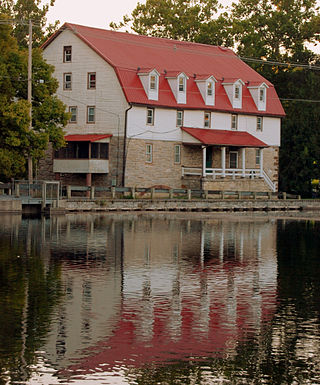
Boiling Springs Historic District is a national historic district located at Boiling Springs, Cumberland County, Pennsylvania. The district includes 127 contributing buildings, 1 contributing site, and 1 contributing structure associated with its role as an early iron manufacturing center and surrounding residential areas of Boiling Springs. Most of the contributing buildings date to the mid-19th century starting in 1845, with a few dated to the early period of development. The oldest buildings are a grist mill, the ironmaster's, Michael Ege, mansion (1795), and the restored Boiling Springs Tavern (1832). Other notable non-residential buildings include the former stone stables (1829) and forge building (1850s). Residential areas include notable examples of the Bungalow/craftsman, Late Victorian, and Federal styles. The contributing structure is a stone three-arched bridge (1854).

Carlisle Historic District is a national historic district located at Carlisle, Cumberland County, Pennsylvania. The district includes 1,011 contributing buildings, 1 contributing site, and 1 contributing object in the central business district and surrounding residential areas of Carlisle. Most of the contributing buildings date to the mid- to late-19th century, with a few dated to the 18th century. Residential areas include notable examples of the Late Victorian and Federal styles. Notable non-residential buildings include the Cumberland County Courthouse (1845-1846), St. John's Episcopal Church, Cumberland County Prison, First Lutheran Church, Tavern, First Presbyterian Church, Theatre, Fire House, Grace United Methodist Church, and St. Patrick's Church.

Shippensburg Historic District is a national historic district located at Shippensburg, Cumberland County, Pennsylvania. The district includes 324 contributing buildings in the central business district and surrounding residential areas of Shippensburg. Most of the contributing buildings date to the mid- to late-19th century, with a few dated to the mid-18th century. Residential areas include notable examples of the Late Victorian and Vernacular Georgian styles. The oldest buildings are log and stone structures and include the Shippen House and Widow Piper's Tavern. Other notable buildings are the Rippey House, William Brookins House, Steward-Goodhart House, Methodist Church, Lutheran Church, and Presbyterian Church.

The High Street Historic District is a national historic district which is located in Pottstown, Montgomery County, Pennsylvania.
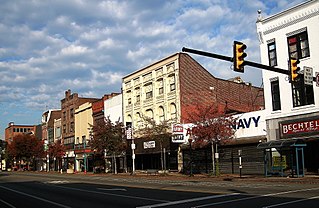
The Old Pottstown Historic District is a national historic district that is located in Pottstown, Montgomery County, Pennsylvania.
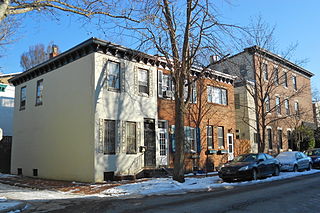
The Ramcat Historic District, also known as the Schuylkill Historic District, is a national historic district that is located in the Rittenhouse Square West neighborhood of Philadelphia, Pennsylvania.

Fairmount Avenue Historic District is a national historic district located in the Spring Garden neighborhood of Philadelphia, Pennsylvania. It encompasses 75 contributing buildings and includes commercial, residential, and industrial properties. Residential buildings include mid- to late 19th-century vernacular Late Victorian rowhouses. Notable commercial and industrial buildings date to the early 20th century through 1930, and are in the early modern and Art Deco styles. Notable non-residential buildings include the A.F. Bernot and Brothers dye works (1900–01), Gaul, Derr, and Shearer building, Security Elevator factory (1925), and the Alemite Lubricator Company offices (1925).

The Titusville Historic District is a national historic district that is located in Titusville, Crawford County, Pennsylvania.

The Doylestown Historic District is a national historic district located in Doylestown, Bucks County, Pennsylvania. The district is composed of one thousand fifty-five contributing buildings in the central business district and surrounding residential areas of Doylestown, including a variety of residential, commercial, industrial, and institutional buildings and notable examples of Late Victorian and Federal style architecture.
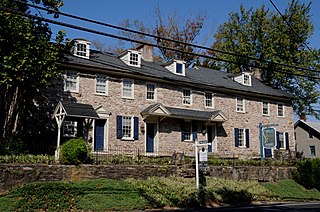
The Holicong Village Historic District is a national historic district which is located in Holicong, Buckingham Township, Bucks County, Pennsylvania.
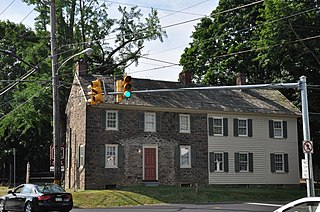
The Village of Edgewood Historic District is a national historic district that is located in Lower Makefield Township, Bucks County, Pennsylvania.

The Mechanicsville Village Historic District, also known as Fenton's Corner, New-Work, and Halifax, is a national historic district that is located in Mechanicsville, Buckingham Township, Bucks County, Pennsylvania.

The New Hope Village District, also known as New Hope M.R.A. District No. 1, is a national historic district that is located in New Hope, Bucks County, Pennsylvania.

East Lancaster Avenue Historic District is a national historic district located in Downingtown, Chester County, Pennsylvania. The district includes 121 contributing buildings and 1 contributing structure in Downingtown. The buildings include a number of notable examples of Georgian style dwellings dated to the early- to mid-18th century. Later notable dwellings are examples of the Federal and Victorian styles. Located in the district and separately listed are the Downingtown Log House and General Washington Inn.

The West End North Historic District encompasses a neighborhood of late 19th and early 20th century residential architecture in western Hartford, Connecticut and eastern West Hartford, Connecticut. Roughly bounded by Prospect, Elizabeth, and Lorraine Streets and Farmington Avenue, the area includes a large number of Colonial Revival and Queen Anne houses, as well as numerous buildings in other period styles, with only a small number of losses. It was listed on the National Register of Historic Places in 1985.
























